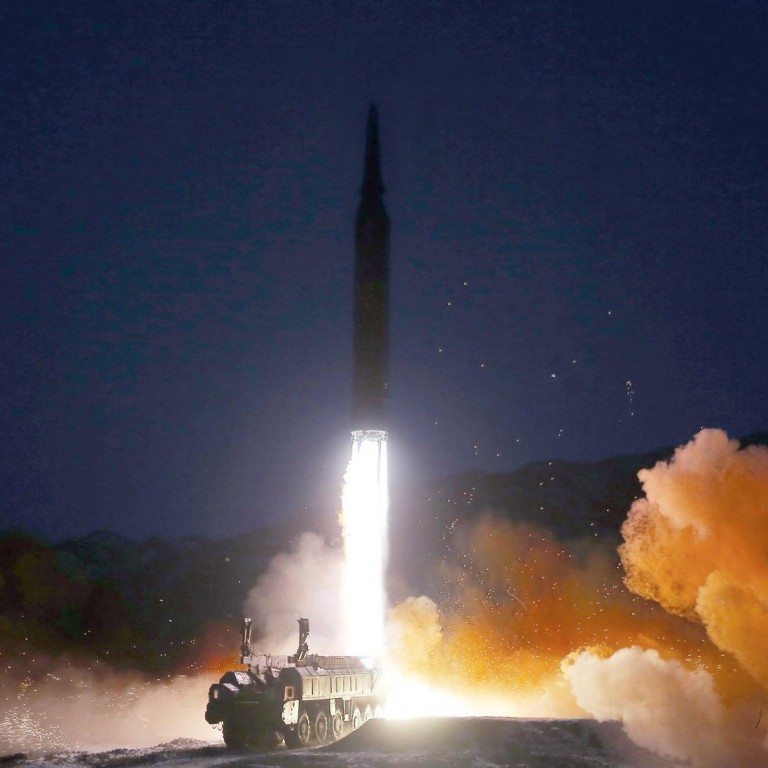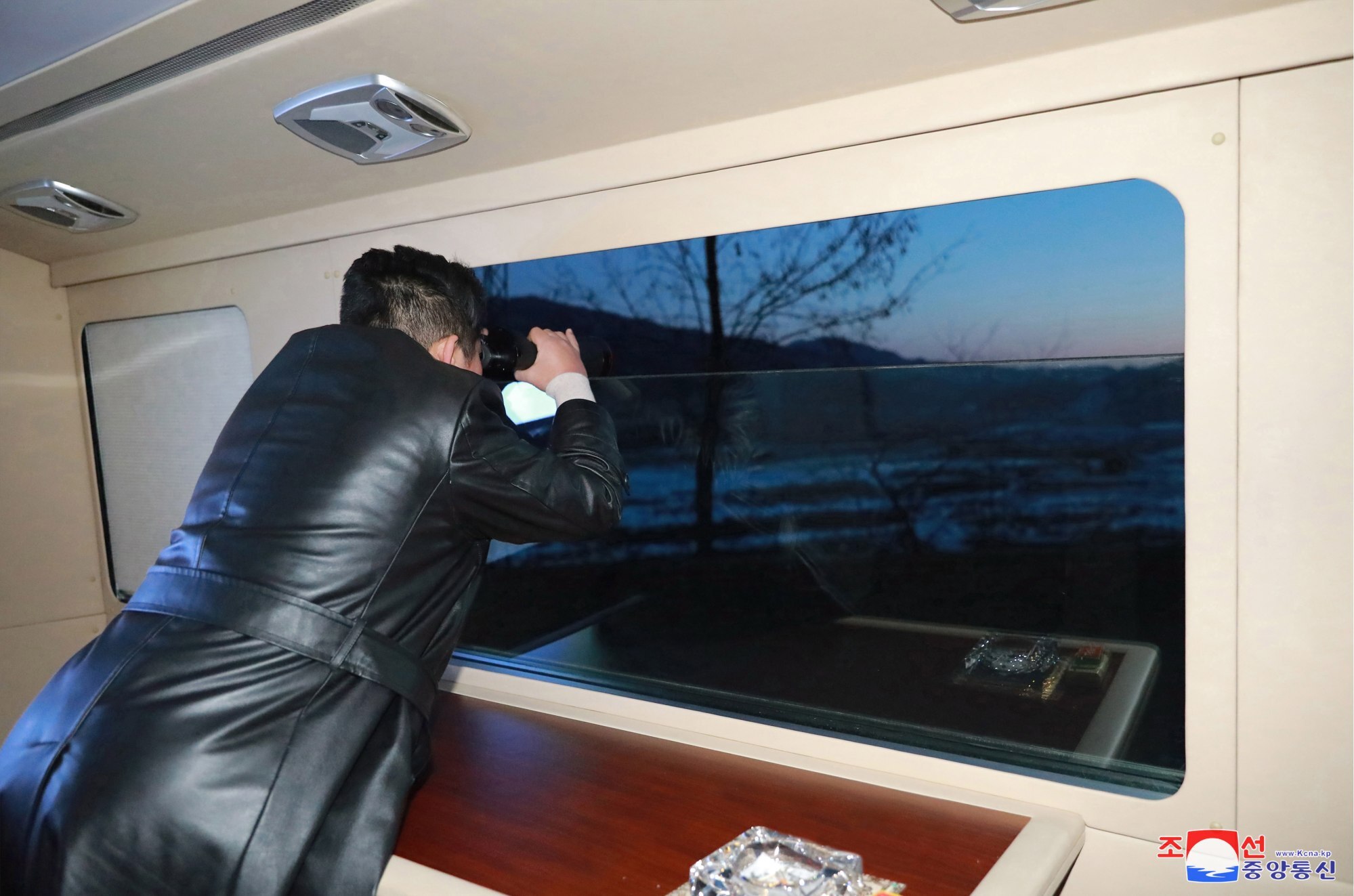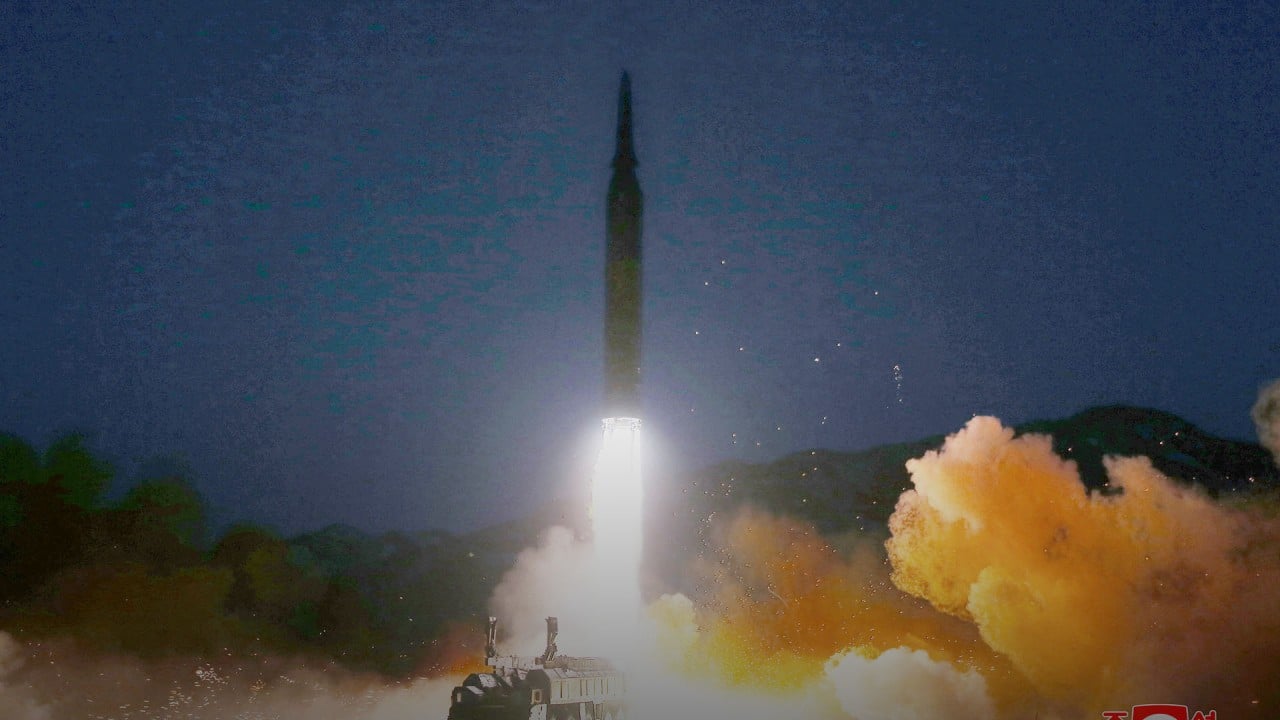
North Korea’s hypersonic missiles send message to Biden: they can hit US back
- The recent tests give Kim Jong-un leverage in future talks by allowing him to menace US allies such as South Korea and Japan, as well as American bases in Asia
- Kim is also likely trying to prove he can strengthen Pyongyang’s position among the world’s nuclear-armed nations despite economic sanctions
The rocket deployed a hypersonic glide vehicle that successfully hit a target at sea after flying roughly 1,000 kilometres (620 miles) and performing a 240-kilometre “corkscrew” manoeuvre, the official Korean Central News Agency said.
After ‘hypersonic’ test, North Korea fires ‘more advanced’ missile at Japan
Duyeon Kim, an adjunct senior fellow in Seoul at the Centre for a New American Security, said Pyongyang is trying to create the impression that it can hit back.
“Recent advances in its missile programme indicate that North Korea still aims to secure a second-strike nuclear capability, make its missiles modern and more survivable, reassure the North Korean people of its military might in regard to the US, and credibly gain entrance into the nuclear club,” she said.
Undersecretary of State Victoria Nuland told reporters on Tuesday that the latest test “takes us in the wrong direction.”
“The United States has been saying since this administration came in that we are open to dialogue with North Korea, that we are open to talking about Covid and humanitarian support,” Nuland said. “And instead they’re firing off missiles.”
Defend Kim with your lives, North Korean troops told on 10th anniversary
“These designations convey our serious and ongoing concern about the DPRK’s continued proliferation activities and those who support it,” Secretary of State Antony Blinken said in a statement, referring to North Korea’s formal name. “We remain committed to seeking dialogue and diplomacy with the DPRK and call on the DPRK to engage in negotiations.”

“Kim probably wants the US to perceive his threat potential as not only growing, but ever-expanding and with numerous possibilities,” said Soo Kim, a policy analyst with the RAND Corp. who previously worked at the Central Intelligence Agency.
“This way, he not only ups his game for negotiations – there’s also a surprise element that keeps the US and the international community on their toes.”
During Kim Jong-un’s decade in power, North Korea has gone from possessing a rudimentary nuclear bomb with no proven delivery system to likely detonating a thermonuclear device and building a missile that could carry it to the US.
As punishment, Kim’s regime has been hit with international sanctions that have helped make the North Korean economy smaller than when he assumed leadership.
The North Koreans are not interested in talks right now
Defence analysts argue that what North Korea tested in its last two launches probably doesn’t qualify as a “hypersonic glide vehicle” because its wings wouldn’t provide enough lift for long-range flight. Instead, it was likely a “manoeuvring re-entry vehicle” that can separate from a missile and perform turns to evade interceptors.
“Though North Korea has made some claims, the full extent of this capability is unconfirmed,” said Joseph Dempsey, a research associate for defence and military analysis at the International Institute for Strategic Studies in London.
“However, the ability to change trajectory or flight path could pose additional challenges for regional missile defences.”
North Korea’s Kim calls for ‘absolutely loyal’ military officers
The latest missile – which flew at almost 10 times the speed of sound – would also be harder to track by existing allied radar systems, which have long been focused on more traditional trajectories. That has led to some discrepancies in accounts of the launch, with South Korea defence agencies saying the missile only travelled 700km, not 1,000km.
“The North Koreans could be embellishing their achievements, or the limited sensor arrays possessed by Japan and South Korea may have had some trouble coping with this new class of threat,” said Ankit Panda, a senior fellow in the nuclear policy programme at the Carnegie Endowment for International Peace and author of the book Kim Jong-un and the Bomb: Survival and Deterrence in North Korea.
“These tests, I think, are largely accounted for by Kim’s own military modernisation objectives in the pursuit of effective nuclear deterrence against the US,” Panda added. “The North Koreans are not interested in talks right now.”


